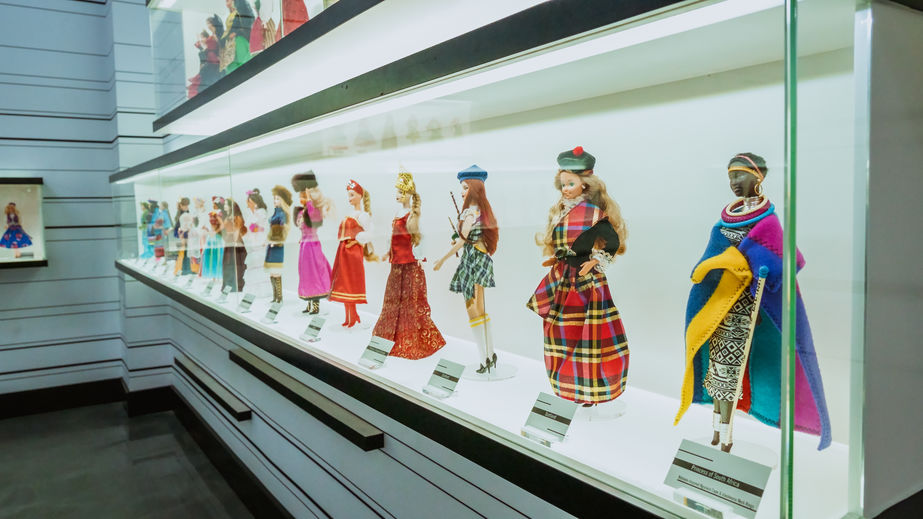Barbie was first launched in Japan

Barbie was first launched in Japan
Where was Barbie first launched?
The Enigmatic Japanese Genesis of Barbie Dolls:
The American Vision
“Where was Barbie first launched?” you may wonder. Contrary to popular belief, Barbie was first launched in Japan. In March 1959, at the American International Toy Fair in New York, Ruth Handler introduced Barbie to the world, a doll she envisioned after noticing her daughter’s predilection for adult-like dolls over infant-like ones. However, a less recognized fact is that the original Barbie dolls were manufactured and assembled in Japan before making their U.S. debut.
Japan: The Production Hub
In the mid-20th century, post-war Japan’s economy was burgeoning, yet labor costs remained low compared to the United States. American companies, including Mattel, leveraged this economic situation, contracting Japanese manufacturers to produce goods inexpensively. Thus, Japan became the manufacturing hub for the first Barbie dolls, and the product journey of Barbie started in the land of the rising sun.
The Artistry of Japanese Craftsmanship
Though the Barbie’s conception was an American initiative, the manufacturing aspect was distinctly Japanese. This included the intricate process of crafting and assembling the doll’s body, the delicate painting of the face, and the meticulous stitching of the clothes. These tasks were often executed by skilled Japanese artisans, known for their attention to detail and dedication to craft, introducing an unexpected touch of Japanese finesse to this iconic American symbol.
Globalization and Cultural Exchange
The logistics of Barbie’s production and distribution were interesting in themselves. The dolls were manufactured in Japan, shipped across the Pacific Ocean to the United States, and then distributed nationwide to retail stores. This process demonstrated a unique example of early globalization and the subsequent convergence of cultures.
Barbie’s Return to Japan
The cultural intermingling was not a one-way street, though. As Barbie dolls began to flood into American markets, so too did they find their way into Japanese households. This marked an unusual reverse cultural flow. Barbie, an American doll first made in Japan, was now making its way back to Japan as an emblem of Western culture.
Adapting Barbie in Japan
The doll’s adoption in Japanese society was not without its challenges. Barbie’s distinctly Caucasian appearance and Western lifestyle initially caused some friction with traditional Japanese aesthetics and values. However, over time, the Japanese market began to accept and adapt Barbie into its unique cultural framework. This was evident in localized versions of Barbie, with traditional kimonos and other Japanese cultural elements incorporated into the doll’s clothing and accessories.
The Global Impact of Barbie
Ultimately, the story of Barbie is more than just the tale of a toy. It is a narrative of cultural exchange, interweaving two distinct societies — the United States and Japan — through the thread of a child’s plaything. It speaks to the early dynamics of globalization, the subtle dissemination of cultures, and the reciprocal influences shared between East and West.
Reflecting on Barbie’s Origins
“Where was Barbie first launched?” This question brings us back to the tale of Barbie’s inception in Japan, underscoring the doll’s truly global reach and multicultural roots. It’s a poignant reminder that even the simplest of objects can be vessels of cultural exchange and understanding, fostering connections across the vast expanses of our world. Today, as Barbie continues to evolve, reflecting the diversity and inclusivity of the modern world, her humble Japanese origins persist as a testament to her enduring global appeal. She remains a symbol of cultural hybridity, born from the fusion of American ideas and Japanese craftsmanship, a doll that truly transcends national boundaries.
Trivia: The Adaptation of Barbie Dolls for the Japanese Market
- Barbie was not initially a success in Japan. When Barbie was first launched in Japan in 1962, she was met with a lukewarm reception. Japanese girls were not used to seeing dolls that looked so different from themselves, and they found Barbie’s blonde hair and blue eyes to be unrealistic.
- Barbie’s success in Japan was due in part to the efforts of Ruth Handler, the creator of Barbie. Handler visited Japan several times in the early 1960s to meet with Japanese retailers and to promote Barbie to Japanese consumers. She also worked with Mattel to create Barbie dolls that were more appealing to Japanese girls, such as dolls with black hair and brown eyes.
- Barbie is now one of the most popular dolls in Japan. She is outsold only by Licca-chan, a Japanese doll that is often described as Barbie’s rival. Barbie is popular in Japan for a variety of reasons, including her fashion sense, her career aspirations, and her ability to inspire girls to be anything they want to be.
Here are some additional interesting facts about Barbie:
- Barbie’s full name is Barbara Millicent Roberts.
- Barbie has been married three times, to Ken Carson, Alan Stewart, and Blaine.
- Barbie has had over 150 careers, including astronaut, doctor, and fashion designer.
- Barbie has been the subject of numerous books, movies, and television shows.
- Barbie is the most popular doll in the world, with over 1 billion dolls sold.











I always believed that Barbie was a Japanese creation, which Mattell later bought the rights to, after she was produced.
My father brought the original doll wirh gorgeous fashion accessories, back for me after a visit to Japan in The late 50’s or early 60’s.